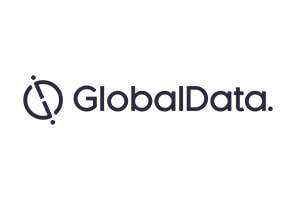
The Hepatitis C virus (HCV) is recognised globally as a serious and major public health problem. The number of total prevalent cases of anti-HCV+ (including diagnosed and undiagnosed) in the nine major markets (9MM) of the US, France, Germany, Italy, Spain, the UK, Japan, China, and Brazil is expected to increase from 19,842,780 total prevalent cases in 2015 to 20,886,113 total prevalent cases in 2025, at an annual growth rate (CAGR) of 0.53%.
Anti-HCV+ include patients who have tested positive for the presence of antibodies to HCV. Of the 9MM, China is expected to have the highest number of anti-HCV+ total prevalent cases from 2015–2025 (Figure 1). There is a growing burden for greater public awareness to prevent transmission, particularly among high-risk populations such as those who inject drugs. Early diagnosis is also required to reduce the detrimental effects HCV infection can have on the liver.
Hepatitis C is a blood-borne liver disease caused by HCV, which can cause both acute and chronic hepatitis. It can range from a mild infection lasting a few weeks to a life-long disease. The most common ways to contract HCV are by sharing needles or other equipment used to inject drugs, as well as unsafe healthcare and blood transfusions. Many patients infected with HCV develop scaring of the liver or liver cancer.
One challenge in controlling HCV transmission is that an acute HCV infection dow not usually have symptoms. Therefore, few people are diagnosed during this early phase, making it more likely for them to pass on the disease unknowingly. In addition, undiagnosed patients are more likely to have the infection worsen and become chronic.
There is currently no vaccine against HCV, so reducing the risk of exposure to the virus is critical. Details about the trend analysis and other discussions of HCV epidemiology can be found in GlobalData’s EpiCast Report: 'Human Immunodeficiency Virus (HIV) – Epidemiology Forecast to 2025 and in GlobalData’s EpiCast Model: Hepatitis C Virus (HCV) – Epidemiology Forecast to 2025'.
The figure below highlights the projected increase in total prevalent cases of anti-HCV+ in the 9MM from 2015 to 2025.
How well do you really know your competitors?
Access the most comprehensive Company Profiles on the market, powered by GlobalData. Save hours of research. Gain competitive edge.

Thank you!
Your download email will arrive shortly
Not ready to buy yet? Download a free sample
We are confident about the unique quality of our Company Profiles. However, we want you to make the most beneficial decision for your business, so we offer a free sample that you can download by submitting the below form
By GlobalDataFigure SEQ
Figure * ARABIC 1: 9MM, Total Prevalent Cases of Anti-HCV+, Men and Women, All Ages, 2015–2025, N








